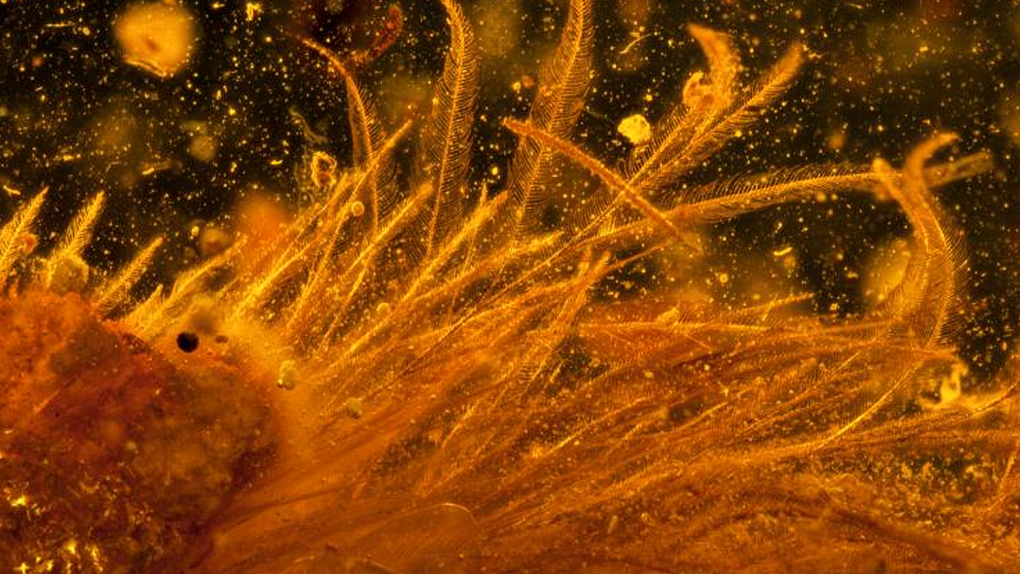Scientists have known for a while now that many dinosaurs had feathers, and simply weren’t the shiny, leathery reptilian beasts that movies are so fond of depicting, but finding intact feathers that have survived untold eons is virtually impossible. That is, unless a dinosaur somehow found a way to accidentally let a portion of its body get smothered in tree sap and then conveniently died in a place where humans would eventually stumble upon it. It seems at least one such dinosaur did exactly that.
In a new paper published in Current Biology, a group of scientists led by Lida Xing detail the discovery and inspection of a remarkably preserved tail from a member of the dinosaur subgroup Coelurosauria. The tail is partially covered in amber, allowing humanity a rare glimpse of its original appearance. The fossil was discovered in Myanmar, and is thought to be from the mid-Cretaceous period, which puts its age somewhere in the neighborhood of 100 million years.

The scientists have already ruled out the possibility that the tail was from a prehistoric bird due to the vertebrae structure in its tail, meaning that this was indeed a feathered, ground-dwelling dinosaur.

The feathers themselves are described as being flexible in nature, suggesting that they are more in line with ornamental feathers — that is, feathers that have little or no value when it comes to flight. That means the feathers were almost certainly for looks and little else. However, these prehistoric feathers are still an important puzzle piece for researchers attempting to trace back the origins of feathers as a whole.








